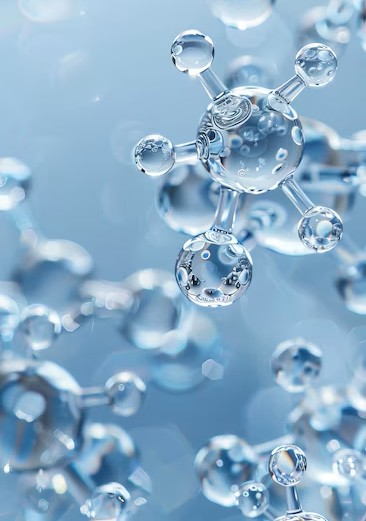What is Dispersant MF?
Dispersant MF is a special chemical used to help mix and spread particles evenly in water-based mixtures. Imagine trying to stir sugar into a glass of water—if the sugar clumps up, it doesn’t dissolve properly. Dispersant MF works like a helper that prevents clumping, making sure everything stays evenly mixed, whether it’s dyes in fabric, pigments in paint, or materials in concrete. Chemically, it’s made from something called methylnaphthalene sulfonic acid combined with formaldehyde, but don’t worry about the fancy name—it’s just a dark brown powder that dissolves easily in water and works like magic in many industries.
This powder is super versatile because it can handle tough conditions like acidic or alkaline environments, high temperatures, and even hard water (the kind with lots of minerals). It doesn’t foam up or cause messes, which makes it a go-to choice for keeping things smooth and consistent in all sorts of processes.
Why is Dispersant MF So Useful?
Think of Dispersant MF as a “team player” that makes other materials work better together. It’s used in industries like textiles, construction, paints, and more because it:
- Keeps particles spread out evenly (no clumps!).
- Works well in hot, cold, or chemically harsh conditions.
- Saves time and money by making processes smoother and more efficient.
- Is safe for people and generally eco-friendly, though it needs to be used carefully to avoid buildup in the environment.
Where is Dispersant MF Used?
1. Textile Industry: Making Fabrics Look Great
If you’ve ever dyed a shirt or admired a brightly colored scarf, Dispersant MF might have played a role. In the textile world, it’s used to make sure dyes spread evenly across fabrics like polyester, wool, silk, or nylon. Without it, you might end up with splotchy colors or uneven patches.
For example:
- Disperse Dyes for Polyester: When dyeing polyester clothes, Dispersant MF helps the dye particles stay suspended in water so they stick to the fabric evenly. You might use about 1–3 grams of the powder per liter of water in a dye bath to get a vibrant, consistent color.
- Vat Dyes for Cotton or Wool: For tougher dyes like vat dyes, it prevents the dye from clumping up during the dyeing process, ensuring the fabric looks smooth and professional. A typical amount might be 2–5 grams per liter for one part of the process and less for another.
- Azoic Dyes for Bright Colors: These dyes are used for bold reds and oranges. Dispersant MF makes sure the color goes on evenly and stays vibrant, even after washing or rubbing.
It’s like a secret ingredient that helps clothes look bright and even without wasting dye or creating a mess. It also sticks slightly to fibers like wool or nylon, which helps the dye bond better, but it doesn’t work as well with cotton or linen.
2. Construction: Stronger Concrete, Faster Building
In construction, Dispersant MF is a superstar for making concrete better. It’s called a “superplasticizer” because it helps mix concrete with less water, which makes it stronger and easier to work with. Imagine pouring concrete for a building foundation—if it’s too thick, it’s hard to spread, but if it’s too watery, it won’t hold up. Dispersant MF finds the sweet spot.
Here’s how it helps:
- Reduces Water: You can use up to 20% less water in concrete, which makes it stronger and more durable.
- Saves Time: The concrete sets faster, so builders can move on to the next step sooner.
- Saves Money: Less water and cement are needed, and the concrete lasts longer because it’s less likely to crack or let water seep through.
For example, a construction team might add about 0.5–1% of Dispersant MF (by weight of the cement) to a concrete mix. This small amount can make a big difference in building bridges, roads, or high-rise buildings that need to be strong and long-lasting.
3. Paints and Coatings: Smooth and Colorful Finishes
Ever wonder how paints stay smooth and colorful without settling at the bottom of the can? Dispersant MF is often the answer. It’s used in water-based paints, inks, and coatings to keep pigment particles (the stuff that gives paint its color) evenly spread out. This means:
- The paint stays smooth and doesn’t clump, even after sitting on a shelf for months.
- You get a consistent color when you paint a wall or print a poster.
- Less pigment is wasted, so manufacturers can make high-quality paint more efficiently.
For instance, in a factory making water-based wall paint, Dispersant MF is mixed into the liquid to keep the color particles floating evenly. The paint is then ground at high speed to make it super smooth before it’s canned.
4. Other Uses: From Pesticides to Paper
Dispersant MF pops up in all sorts of places:
- Pesticides: It helps mix pesticides that farmers spray on crops, making sure the chemicals spread evenly and stick to plants.
- Paper Production: It stops paper pulp from getting slimy and helps make paper smoother and more consistent.
- Rubber and Leather: In rubber, it keeps latex stable during production. In leather, it helps tan hides to make them soft and durable.
- Ceramics and Oil Drilling: It’s used to disperse materials in ceramic production or to keep drilling fluids stable in oil wells.
Why Choose Dispersant MF Over Other Options?
There are other dispersants out there, like Dispersant NNO, but Dispersant MF often comes out on top because:
- It’s more effective at spreading particles, especially for tricky dyes or pigments.
- It handles tough conditions like high heat or strong chemicals without breaking down.
- It’s safe and non-toxic, so it’s okay to use in products that people come into contact with, like clothes or paint.
However, it’s not perfect. For example, it doesn’t mix well with certain cationic (positively charged) chemicals, so it’s not ideal for every situation. Also, while it’s generally eco-friendly, its naphthalene base can take a long time to break down in the environment, so industries need to be careful not to overuse it or let it build up in water systems.
How to Use Dispersant MF
Using Dispersant MF is pretty straightforward, but it depends on the job:
- For Dyeing Fabrics: Dissolve the powder in warm water (about 30–50°C) before adding it to the dye bath. Use a small amount, like 0.5–5 grams per liter, depending on the dye and fabric. Stir it well to make sure it’s fully mixed.
- For Concrete: Mix a small percentage (0.5–1% of the cement weight) into the concrete blend. It’s usually added with the water to make the mix smooth and workable.
- For Paints: Add it to the water-based mixture, then grind the paint at high speed to get a smooth, even texture.
The key is to measure carefully and mix thoroughly to get the best results. Too much or too little can affect how well it works.
Environmental and Safety Notes
Dispersant MF is generally safe for people—it’s non-toxic and won’t harm you if handled properly. But because it’s made from naphthalene, it doesn’t break down quickly in nature, which could be a problem if it builds up in rivers or soil. Companies using it should follow guidelines to minimize waste and avoid environmental harm. For example, textile factories should treat their wastewater to remove any leftover dispersant before releasing it.
If you’re handling the powder, it’s a good idea to wear gloves and a mask to avoid breathing in dust, just like with any fine chemical powder.
Where to Find Dispersant MF
If you’re looking to buy Dispersant MF or learn more about it, check out suppliers like GREEN AGROCHEM, which specialize in industrial chemicals. For pricing or availability, you can visit websites for general information or contact manufacturers directly. Prices vary depending on the quantity and region, so it’s best to shop around.
Final Thoughts
Dispersant MF is like an unsung hero in industries that make things we use every day—brightly colored clothes, strong concrete buildings, smooth paints, and even high-quality paper. It’s a simple powder that does a big job by keeping particles evenly mixed in water, saving time, money, and effort. Whether you’re dyeing a T-shirt, building a skyscraper, or painting your house, Dispersant MF might be quietly making it all work better.

